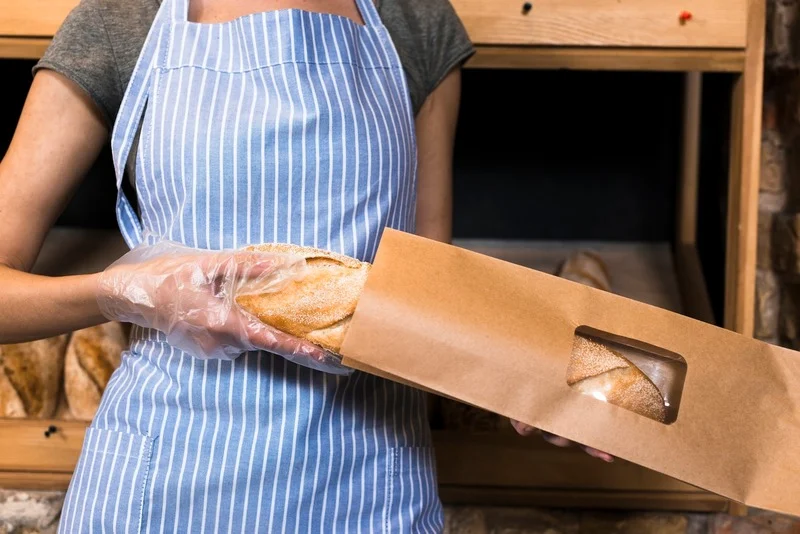Hard bread is a common issue that many home cooks face. Whether it’s an old loaf from last week or a burnt baguette from this morning, the problem remains the same: How do we revive it? Dive into the secrets of how to soften hard bread and bring that chewy texture back to life.
Related Article: Best Techniques: How to Defrost Bread Fast
Understanding Stale Bread: It’s All About Starch
When bread goes stale, it’s not just losing moisture. Starch molecules in the bread undergo a process called retrogradation, turning your soft, fluffy loaf into something more cardboard-like and flavorless. This change in starch structure is what makes bread tough and unappetizing.
The Oven Method: Your Best Bet for Hard Bread
If your bread feels like a brick, the oven can be your savior. Here’s the trick:
- Preheat the oven to a moderate temperature.
- Wrap the bread in aluminum foil to trap in moisture.
- Place it in the oven for about 10-15 minutes.
This process rejuvenates the starches in the bread, transforming it from dense and rubbery back to its original soft state. Remember, the key is moisture and heat!
The Quick Microwave Solution
For those in a rush, the microwave can offer a speedy solution.
- Dampen a paper towel and wrap it around your slice or piece of bread.
- Put it in the microwave for 10-20 seconds.
- Check the texture and moisture content; repeat if necessary.
This method uses steam to reintroduce moisture, softening the bread effectively. However, avoid overdoing it, or you might end up with a soggy mess.
Repurpose Your Stale Bread: Croutons, Breadcrumbs, and More
Instead of trying to revive an old loaf, why not give it a new purpose?
- Croutons: Cube the bread, toss with butter and herbs, and toast until golden.
- Breadcrumbs: Blitz dry bread in a food processor and use in recipes.
- Bread pudding: A classic recipe that makes use of stale bread, milk, eggs, and sugar.
By repurposing your stale bread, you can create delicious dishes that might even outshine the original loaf.
Tips to Prevent Bread from Going Hard
- Store Properly: Keep bread in an airtight bag or container.
- Avoid the Fridge: Cold temperatures accelerate starch retrogradation.
- Freeze Excess: If you can’t consume the entire loaf in a week, slice and freeze the excess. Thaw and toast as needed.
Read more about Bread 101: An Overview of Different Types & Uses.
Additional Tips and Tricks for Bread Lovers
Apart from the primary methods to rescue your hard bread, there are some additional pointers and hacks that every bread enthusiast should be aware of. Let’s dive into some of these lesser-known tips.
The Moisture Magic of the Spray Bottle
If you don’t have a microwave or oven at the ready, a simple spray bottle can be quite handy.
- Fill a spray bottle with water.
- Lightly mist the surface of your stale bread.
- Place it in a toaster or a heated skillet, allowing the water to steam and soften the bread’s crust and interior.
This method is particularly effective for crusty bread types like sourdough and baguettes.
The Butter and Pan Toasting Method
Sometimes, a hard slice of bread needs a bit of fat to bring it back to life.
- Heat a skillet over medium heat.
- Spread butter on both sides of your stale bread slice.
- Toast the bread in the skillet, pressing it down occasionally.
The heat combined with the butter not only softens the bread but also gives it a deliciously crispy exterior.
Bread Soup – A Delicious Rescue Recipe
This age-old trick from the kitchens of our grandparents is a wonderful way to repurpose stale bread.
- Tear your hard bread into chunks.
- In a bowl, mix it with flavorful broth, tomatoes, onions, and some herbs.
- Cook until the bread has absorbed the liquid and softened.
The result is a hearty, comforting soup that’s perfect for cold evenings.
Rehydrate with Milk for a Breakfast Treat
Turn that stale loaf into a morning delight with this simple trick.
- Dip your bread slices in milk briefly, ensuring they don’t become too soggy.
- In a separate bowl, beat some eggs, add a pinch of sugar, and a splash of vanilla.
- Dip your milk-soaked bread into the egg mixture and fry in a hot skillet.
The result? A French-toast-like breakfast that’s both soft and flavorful!
Bread’s Second Chance: Every Loaf Deserves It
It’s natural for bread to lose its freshness over time, but that doesn’t mean it’s destined for the trash bin. With these methods and tips at your disposal, stale or hard bread can find a second chance in your kitchen. Whether you’re reviving it for a simple toast in the morning or turning it into a gourmet evening recipe, remember: every loaf, no matter how old, has the potential to delight once more.
Frequently Asked Questions
Can I use other liquids besides water to moisten bread in the spray bottle method?
Yes, you can use liquids like milk or broth, depending on the flavor you desire. However, water is the most neutral choice.
Will the butter and pan toasting method work for all types of bread?
While it’s effective for most bread types, extremely dry or very thin slices might become too crispy or burnt.
How can I tell if my bread is too gone to be revived?
If the bread has mold, a sour smell, or is excessively crumbly, it’s better to discard it rather than trying to revive it.




